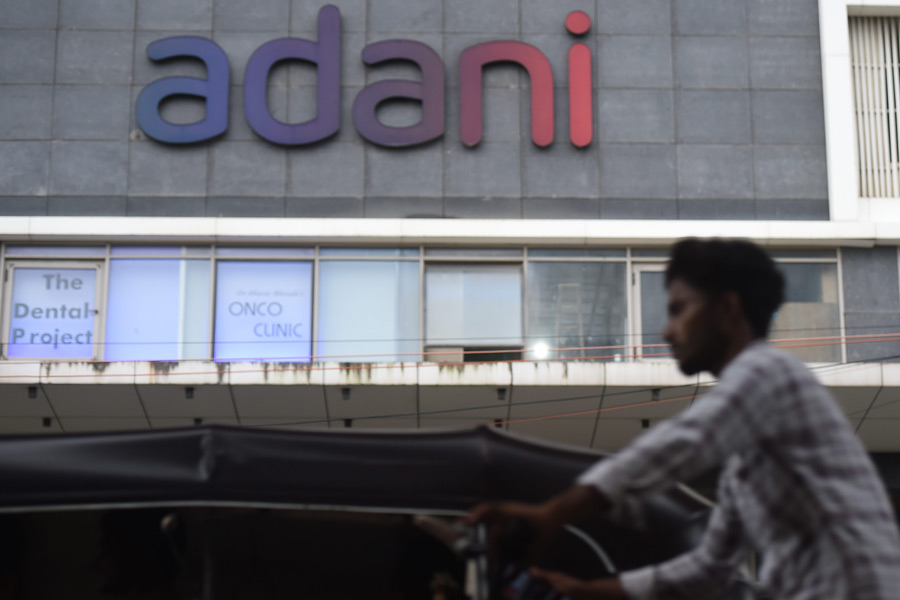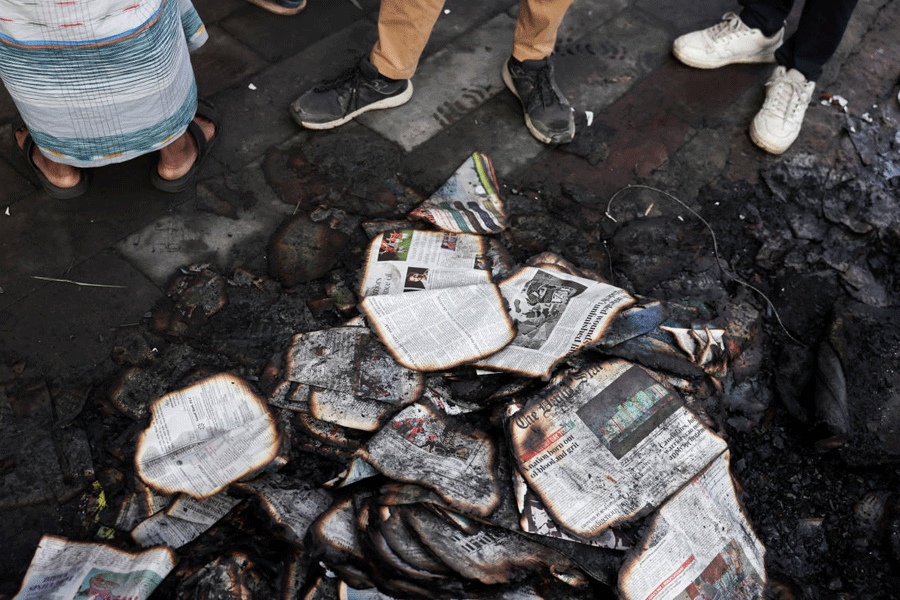 |
 |
| The main gate of Raj Quila and (below) the moat around the fort in Darbhanga. Pictures by Pramod Gupta |
Darbhanga, Jan. 16: Raj Quila, once a rare monument in north Bihar and a sign of royalty of Darbhanga Maharajadhiraj Kameshwar Singh, is in a shambles now. And nobody is there is take care of it.
The fort, modelled on the Buland Darwaza of Fatehpur Sikri, has been declared as a heritage spot but is lying neglected.
The historic monument — Ram Bagh and the residential Dyorhi — has lost its identity because of a slew of reasons. At the time of the Maharaja, Ram Bagh was considered the source of all powers and its blessings made a person important. But now, all that is past and portions are falling off the quila, fissures are appearing on the fort walls and trees are taking root.
The successors of the Raj family have even sold off bricks from the damaged walls. The bricks are durable even after 70 years.
Construction of the fort was started after the 1934 earthquake when the Raj announced to confer the title of “Native Prince” to Maharaja Kameshwar Singh. The contract was given to a Calcutta-based firm and work was on in full swing in 1939-40. Three sides of the fort were constructed with all the protective measures till work was stayed because of litigation and a stay order from the high court. With the abolition of native royalties by the Indian government post-Independence, work on the fort was eventually abandoned.
The Ram Bagh campus, surrounded by the fort, is constructed on 85 acres and the main gate of the fort — the Singhdwar — is a rare piece of architecture in the state.
A moat was constructed alongside the fort for the protection of the royal family, inside the Dyorhi, from outside attack, agitation or rebellion. The moat that was always filled with water ensured that people could not enter the campus easily.
The fort wall was very thick and high. Watchtowers were constructed atop the fort walls with space for guardhouses.
Military guards were posted at the battlements for 24 hours to counter any emergency. A military barrack was also in place on the Ram Bagh campus. At present, a public school runs in the place the barrack was situated.
A rare Kankali Temple was also established by then Maharaja Mahesh Thakur on the campus. Sources said the Maharaja had found the Kankali idol in the Yamuna while taking a bath.
He carried the idol to the fort to install it on the Ram Bagh campus. The temple, apart from the “kuldevi” of the royal family, continues to attract devotees.
After the death of Maharaja Kameshwar Singh, his successors sold off valuable land on the campus of Ram Bagh, violating the terms of the Maharaja’s will. He had put a part of the property under a charitable trust in his will, but violating the provisions, most of the land on the campus was sold off. While the individuals who purchased the land constructed colonies, a club and a cinema has also come up on the premises.
The fort has remained a centre of attraction for the people of Darbhanga and Mithilanchal. Prakash Kumar, a resident, said: “This fort is a part of Darbhanga’s heritage. It should be preserved as a guide to the royal family.”
Another resident Kamla Yadav said: “This is a heritage site but see how it is neglected. The district administration should work to restore its glory.”
Chandrasekhar Sen, a tourist, said: “The fort has a very high potential from the tourist point of view, only if the district administration and the Archaeological Survey of India would take steps to take care of it.”
The Archaeological Survey of India had made a survey of the fort in 1987-88, accepting its historical importance. It was compared to the Red Fort in Delhi.
Last year, the ASI woke up to request the district administration to acquire the connected lands necessary for the preservation of the historical spot.
The circle officer of Darbhanga block, on the directions of the district administration, served notice on persons concerned for acquiring 27 acres connected with fort. However, even after six months no action has been taken yet.











